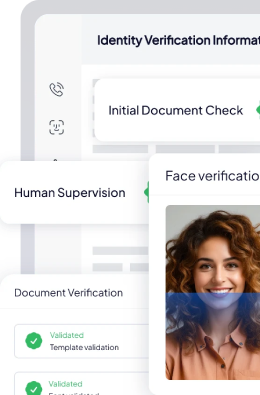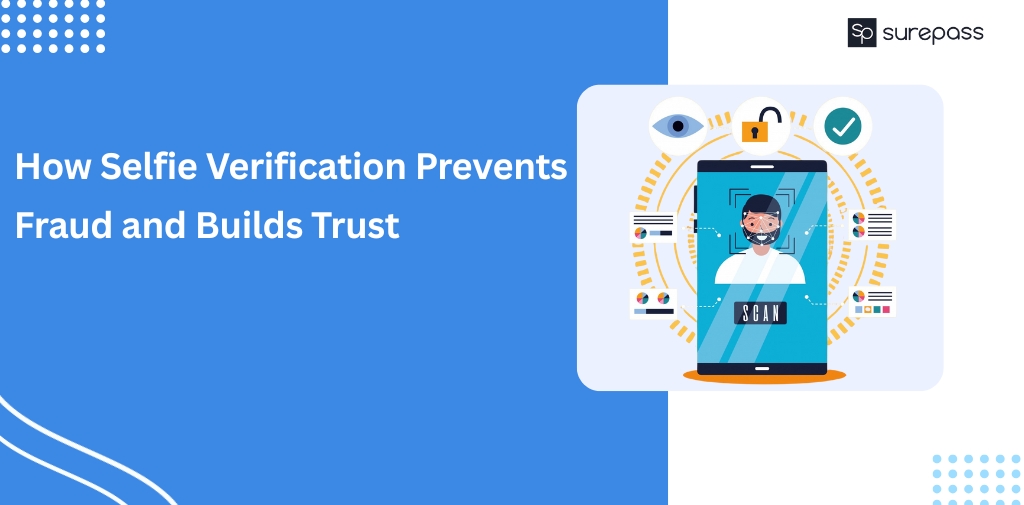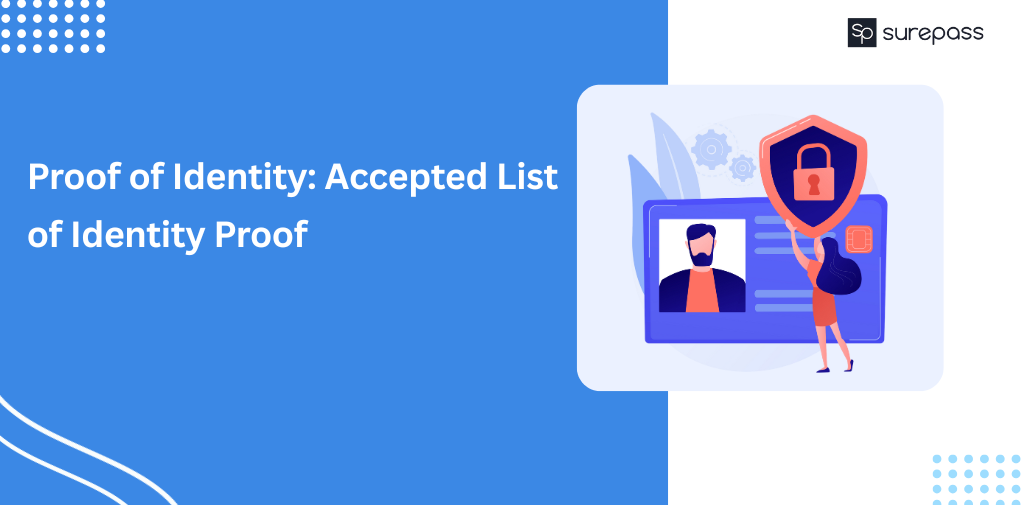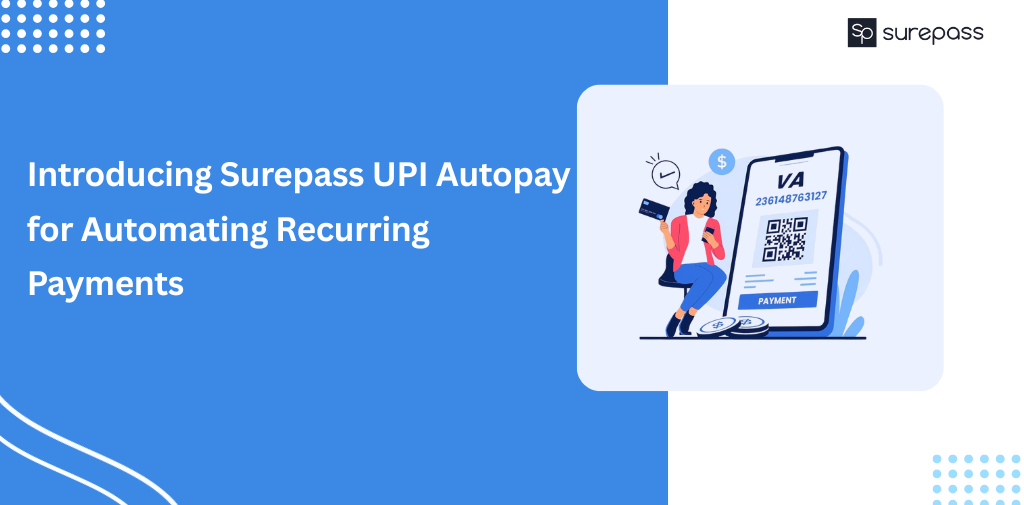Digital identity theft is at an all-time high. Traditional verification methods like OTPs, passwords, or document uploads are no longer reliable. According to reports, millions of people worldwide fall victim to this threat every year. Here, the selfie ID verification solution comes as a reliable alternative. Here, in this, you will learn about selfie identity verification in detail.
What is Selfie Verification?
It is a verification method in which a user takes a live selfie. After that, facial recognition technology is used to compare the selfie with the reference image of official documents. On successful verification, it confirms that the person is genuine and not a static image.
Automate your KYC Process & reduce Fraud!
We have helped 200+ companies in reducing Fraud by 95%
How does Selfie Verification Online Work?
Here is the step-by-step guide that you can follow to verify a selfie.
- Upload Government ID: User needs to upload the government-issued ID, such as Aadhaar, PAN, Driving license, or passport.
- Selfie Capture: After that, a few questions will be asked of the user.
- Facial Feature Analysis: The advanced facial recognition technology will analyze both the selfie and ID photo and create a faceprint.
- Liveness Detection: This technology is used to confirm whether the person is live or using a selfie. After that, it compares it against the submitted ID photo.
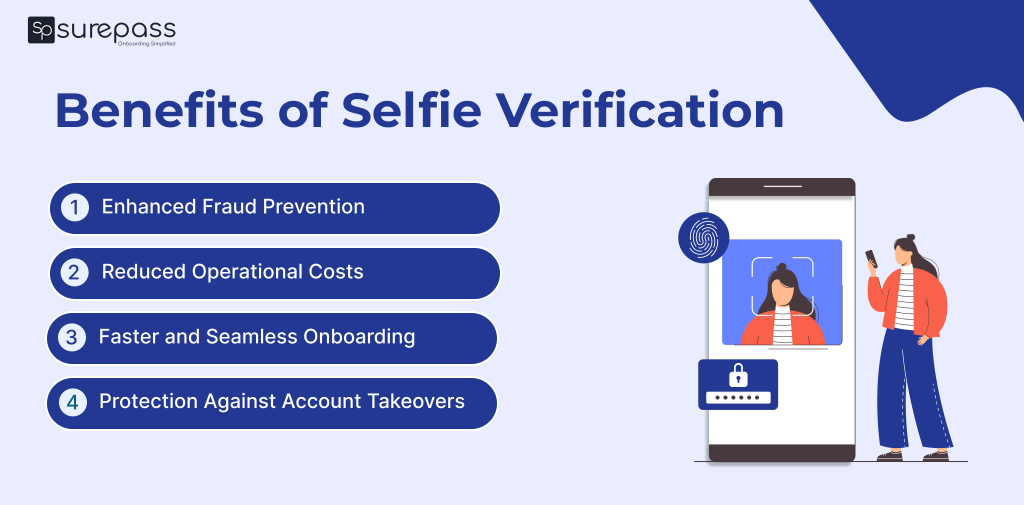
Benefits of verifying Selfies
These are the benefits of verifying selfies:
- Enhanced Fraud Prevention: A selfie confirms that the person who submits an ID is the actual individual. It prevents fraudsters from using stolen IDs, fake documents, or deepfake images. It reduces identity theft in online transactions and account creation.
- Faster and Seamless Onboarding: It eliminates the need for manual verification or in-person KYC. Users can complete verification in minutes via mobile or desktop.
- Reduced Operational Costs: It automates the identity checks using AI-based facial recognition. Fewer manual checks mean lower staffing and administrative costs.
- Protection Against Account Takeovers: Continuous selfie verification can detect suspicious login attempts to bypass security. It confirms that the authorized user can access sensitive accounts.
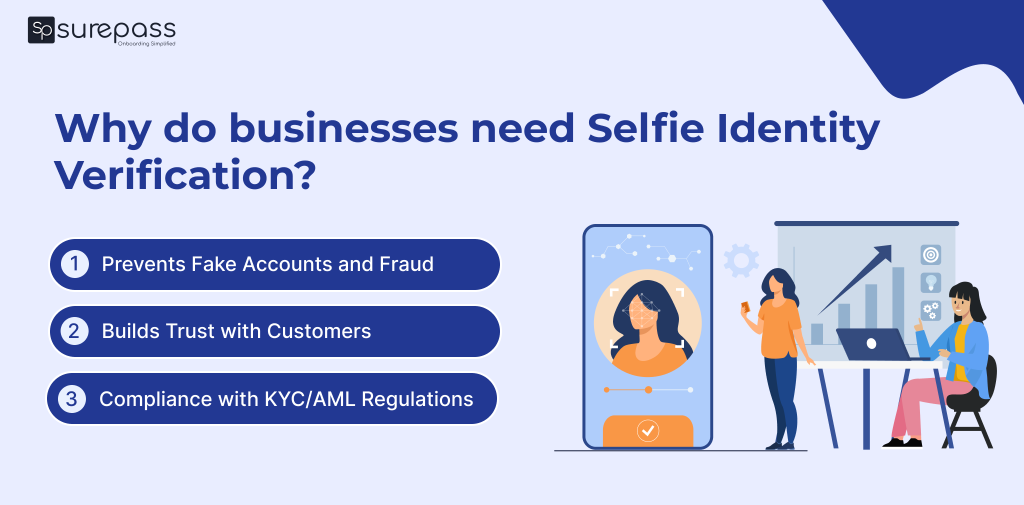
Why do businesses need Selfie Identity Verification?
Currently, fraudsters are updating themselves to pass security checks. It makes it essential for businesses not to rely on verification.
- Prevents Fake Accounts and Fraud: Fraudsters often use stolen IDs or fake documents to create accounts. With the selfie ID verification, the system confirms that the person holding the ID is the one in front of the camera.
- Builds Trust with Customers: Modern and informed customers like to be a part of a trustworthy organization that keeps their data safe and secure. When businesses adopt selfie verification online, customers feel protected.
- Compliance with KYC/AML Regulations: From banking to Fintech and insurance, regulatory compliance is non-negotiable. Selfie verification solutions are designed to meet KYC and AML guidelines. It helps businesses stay compliant.
Industry Use Cases Selfie Verification
Selfie verification is no longer limited to financial services:
- Banking and Fintech: Banks and digital lenders use selfie ID verification. It ensures that the person opening an account or applying for a loan is genuine. It prevents fake account creation, money laundering, and identity theft.
- E-Commerce and Marketplaces: Online platforms face the challenge of fake buyers and fraudulent sellers. With selfie verification online, marketplaces can confirm that users are real individuals. It reduces scams, unauthorized accounts, and fraudulent product listings.
- Insurance Companies: Insurance companies can integrate selfie identity verification into their claim processes to minimize fraud. A quick selfie check confirms that the claimant matches the policyholder and prevents impersonation or false claims.
Comparisons: Selfie Verification vs Traditional ID Checks
| Method | Speed | Security | User Experience | Fraud Prevention |
| OTP Verification | Fast | Low | Easy | Weak |
| Document only KYC | Medium | Medium | Hassle | Medium |
| Video KYC | Slow | High | Complex | High |
| Selfie Verification | Instant | High | Seamless | Very High |
- OTP Verification: OTP verification is widely used and is vulnerable to SIM swapping, phishing, and social engineering.
- Document-only KYC: It improves security but creates friction (mutual uploads, long processing times).
- Video KYC: It is time-consuming, compliant, resource-heavy, and not user-friendly.
- Selfie Verification: This verification method is the most suitable one. It offers instant, secure, AI-driven, and user-centric. It makes a future-ready verification method.
Conclusion
Selfie verification is the most secure way to confirm someone’s identity. It is an advanced technology that analyzes the facial features and matches the face against the submitted government ID. It detects fake, masked selfies and reduces the risk of identity theft. Businesses should integrate a selfie ID verification solution for seamless customer onboarding.
FAQs
Ques: What is Selfie Verification?
Ans: It is an online verification method where face recognition technology is used to verify people’s selfies.
Ques: Is selfie verification safe and secure?
Ans: Yes, it uses advanced encryption and biometric technology.
Ques: Can a fraudster bypass selfie verification with a photo or video?
Ans: No, liveness detection checks can detect fake selfies.
Ques: Which industries use selfie verification the most?
Ans: Banking, fintech, insurance, e-commerce, and gig economy platforms can use selfie verification.
Ques: How does selfie verification stop identity theft?
Ans: Verification examines the face and detects fake photos and prevents fraud.
